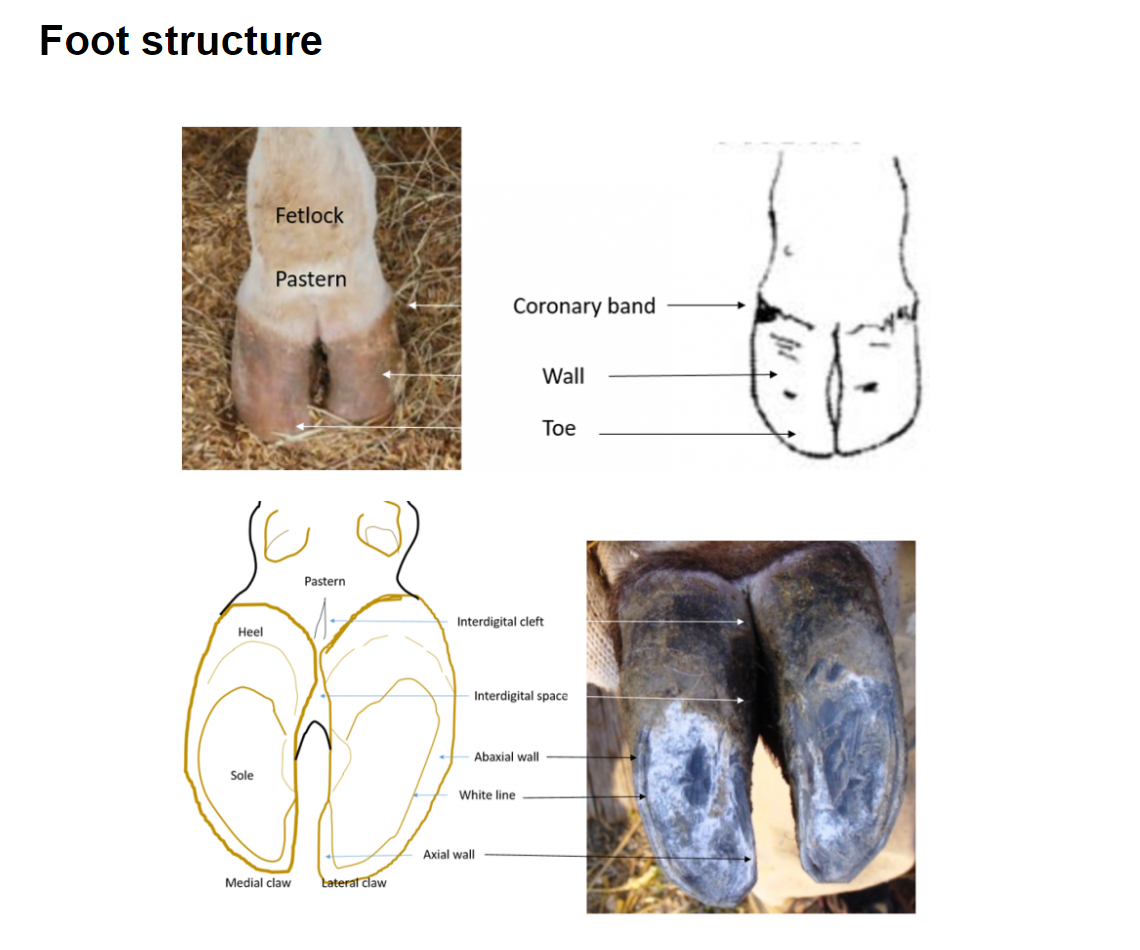Brett Capra, University of Florida, Senior in Animal Sciences & UF/IFAS Extension Intern with Kalyn Waters
Yep, it’s hot! And everyone is feeling it. From the sweat on our brows and cattle in the ponds, there is no question we are in the “heat” of the summer battle! With the heat, rain, and cattle standing in wet areas or ponds it is no surprise we are seeing foot rot issues in our herds. Foot rot is a common occurrence in cattle. It can be a serious health concern, too, as about 20% of all diagnosed lameness in cattle is due to foot rot. The bacterium that causes this disease (Fusobacterium necrophorum, most commonly) is always present in the soil, but wet and humid conditions, very dry conditions, or foot injury can allow it to enter deeper into the foot and cause lameness. With Florida being as moist as it is, it’s important to stay on the lookout for foot rot, as it can lead to chronic disease if not treated in a timely manner.
In terms of injury, any abrasive surfaces, such as gravel or crop stubble, can cause cuts or irritation to the feet. Moreover, high temperatures and humidity can cause the skin around the hooves to chap and crack, which opens it up for bacteria to enter. Certain mineral deficiencies can also result in a higher incidence of foot rot. Zinc, selenium, and copper are all important minerals for hoof and skin integrity, as well as immune function, which makes them vital for the prevention of this disease.
–Diagnosis
 Lameness, along with elevated body temperature, is one of the common signs of foot rot. One major thing to look for is swelling and redness between the claws of the hoof and around the coronary band (see diagram to right).
Lameness, along with elevated body temperature, is one of the common signs of foot rot. One major thing to look for is swelling and redness between the claws of the hoof and around the coronary band (see diagram to right).Swelling around both digits of the hoof can also lead to separation of the claws. It’s important to note that these signs can often be hard to spot unless the foot is picked up. Furthermore, foot rot can lead to a loss of appetite which can affect the weight gain of your cattle. In one 3-year study, it was found that steers affected by foot rot gained 2.3 lbs. per day, but steers that were unaffected gained 2.76 lbs. per day on average.
–
Treatment & Prevention
The good news is that treatment for foot rot is typically successful, especially if the disease is discovered early on. There are multiple options to treat foot rot, and working with your veterinarian for a comprehensive treatment plan is key.
Managing the environment your cattle are in is essential for prevention. Minimize their exposure to sharp rocks, plant stubble, or gravel to avoid injury to their feet. Making sure they don’t spend too much time in wet areas is also important, and their pens should be well-drained to avoid having them stand in urine and manure. Other than the environment, ensuring they are getting enough minerals in their diet through supplementation is a great way to help prevent foot rot. Additionally, vaccination is an option. A commercial vaccine is now available for the control of foot rot.
In summary, foot rot is one of the main causes of lameness in cattle, and it can hurt animal health, productivity, and farm profits. When the skin between the claws gets cut or damaged, bacteria can infect the foot. To prevent it, focus on keeping that skin healthy by providing a balanced mineral mix (especially zinc, copper, selenium) and avoid exposing the cattle to wet, muddy, or sharp surfaces. If you spot foot rot early and start treatment quickly, cleaning the foot and using approved antibiotics usually leads to fast recovery.
–
For more information about foot rot in cattle, use the following publication link: Foot Rot in Cattle | Oklahoma State University
- Big Doe Contest Returns for 2025: A Growing Thanksgiving Tradition - November 14, 2025
- UF/IFAS Extension Panhandle Cattlemen’s College Announces Scholarship Opportunity for Florida Youth – Application Deadline September 15 - August 29, 2025
- Foot Rot Prevention and Treatment for Cattle - August 15, 2025
